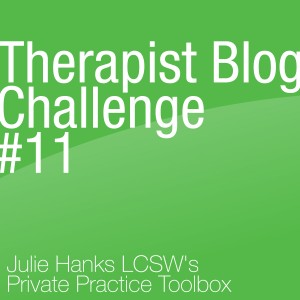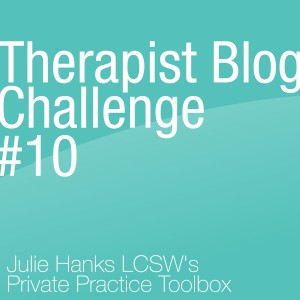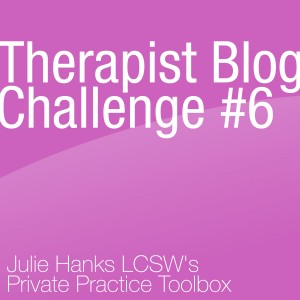 Let the benefits of gratitude inspire your next professional blog post.
Let the benefits of gratitude inspire your next professional blog post.
It's the time of year when Facebook posts, blogs, and tweets take on a tone of gratitude. This is an excellent opportunity for you to share with your readers things that you are grateful for or encourage them to express their gratitude.
- Share your own gratitude list: This can be as easy as creating a simple list of things you are thankful for, or writing an article about the positive benefits of gratitude on mental health.
- Write about gratitude and mental health research: Expressing gratitude is beneficial for a person's well-being (Emmons, 2003). Enjoy the benefits this blog might offer for you and your clients. As a marriage and family therapist you might want to cite Gottman's work on positive versus negative interactions with couples and how that can predict relationship longevity (Gottman, 1989).
- Encourage readers to keep a gratitude journal: I came across this nifty Gratitude Journal app that you could share in your article. Writing down what you are grateful for has been associated with increased happiness and well-being.
Enjoy sharing the benefits gratitude during this time of Thanksgiving!
Additional reminders about the 2013 blog challenge
- Write and post your blog article in the next 2 weeks. If you miss the deadline or you read this article months later, that’s OK too.
- Post a link for this blog challenge in the comment section of this blog post.
- Read, comment, and share other therapist’s articles.
- Tweet your post using hashtag #therapistblog and tag @julie_hanks so I can retweet it.
- Pin it on the challenge Pinterest Board. I’ve invited everyone who posted a comment on the initial blog challenge post as collaborators so you can pin onto the group board.
- Spread the word and invite mental health colleagues to join the challenge. Articles can be added anytime throughout the year.
- Write no more than 600 words, make it easy to read, use a conversational tone, and gear your articles toward your ideal client (not other professionals).
- The goal of a professional blog is to provide value to your website visitors, help them get to know your professional perspective, increase traffic to your private practice website, and build your practice.
Emmons, R. A., & McCullough, M. E. (2003). Counting blessings versus burdens: an experimental investigation of gratitude and subjective well-being in daily life. Journal of personality and social psychology, 84(2), 377.
Gottman, J. M., & Krokoff, L. J. (1989). Marital interaction and satisfaction: a longitudinal view. Journal of consulting and clinical psychology, 57(1), 47.









As healers, we genuinely like to do our work. Guiding clients through the therapy process and seeing them make progress is why we do what we do. But if you're in private practice, you know there's a lot going on in the back end and that it's crucial to run an efficient and organized business.